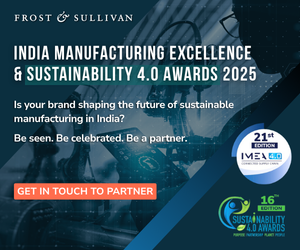By Lalit Chudiwala
For fifteen years, I’ve been on a quest to unlock a cleaner, more sustainable energy future, driven by the urgent need to address escalating global energy demands and the environmental toll of fossil fuels.
My focus? Methane-based hydrogen production, with the ambitious goal of bringing it to market at an incredibly cost-effective price point of around $1 per kilogram.
The Genesis: High Temperatures and Hurdles
My journey began with a dive into the historical use of mercury and its fascinating catalytic properties. Early experiments were intense: mixing mercury with methane at extreme temperatures.
While these trials generated significant heat energy, they were incredibly difficult to control. Computer simulations in the 800-2000 degrees Celsius range confirmed the high energy output, but the challenges of scalability and safety loomed large, compounded by a lack of comprehensive documentation for such extreme conditions.
A Breakthrough at Lower Temperatures:
Despite securing a patent in 2023, initial attempts to secure government grants proved unsuccessful. This setback, however, led to a crucial strategic shift: I decided to explore lower temperatures. Studies between 100 and 400 degrees Celsius commenced, and the persistence paid off. We achieved a significant breakthrough at approximately 200 degrees Celsius, successfully converting methane into hydrogen and propane. The chemical equation, simple yet profound, is 2CH4→C2H6+H2.
Our proof-of-concept yielded a promising 3.6% conversion, comprising 2.6% hydrogen and 1% propane. This low-temperature reaction was a game-changer, drastically reducing the energy input required compared to our earlier high-temperature endeavors.
Compared to traditional methods like SMR and pyrolysis, which operate above 800°C and produce carbon dioxide, our technology operates below 150°C, yields valuable byproducts, and reduces dependence on crude oil. We also recognize the inefficiencies of electrolysis, which requires 55 units of electricity per kilogram of hydrogen, and the long-term wastefulness of solar power after 25 years.
Patent:
Our patented project, with a prototype in development, stems from studying the mercury photosensitization decomposition of the methane reaction, aiming for the return of methane and mercury (fuel) without combustion or wastage. This theoretical and chemical reaction has been solved, with simulations extracted from GAUSSIAN software. The anticipated benefits are clear: reduced electricity costs, independence from fossil fuels, stable energy prices, reliable power supply, fuel diversification, energy security, job creation, and environmental friendliness.
Our patented technologies encompass various applications of high-energy atomic reactions involving mercury and methane. From rocket propulsion to generating extreme heat for electricity production, our primary focus remains the cost-effective, low-temperature production of green hydrogen and valuable byproducts like propane and butane, aiming to outperform conventional methods such as SMR. Our overarching mission is clear: mitigate methane emissions, reduce pollution, conserve fossil fuels, earn carbon credits, and combat climate change, all while yielding substantial commercial benefits.
“Greener Than Green”—A” New Paradigm:
What makes our approach “greener than green”? Unlike Steam Methane Reforming (SMR), which dominates 94-95% of the market but releases significant carbon dioxide and carbon monoxide, our process generates no carbon oxides.
Furthermore, operating at a mere 150 degrees Celsius demands substantially less energy than SMR (around 800 degrees Celsius) or electrolysis. While electrolysis produces “green hydrogen” by splitting water, it’s energy-intensive, requiring roughly 55 units of electricity for every kilogram of hydrogen, and often demands a considerable land footprint for associated renewable energy infrastructure.
Economic Viability and Byproducts:
Economically, our estimated production cost for hydrogen is a remarkable ₹80-₹90 per kilogram. This figure even includes the value of valuable byproducts like propane and potential carbon credits.
This contrasts sharply with the ₹300 per kg cost associated with SMR and the ₹400-₹500 per kg cost of electrolysis, suggesting a potential saving of nearly ₹40,000 crore for the Indian hydrogen market.
Beyond methane, our research also explores utilizing biofuels and biomethane derived from agricultural, municipal, and animal waste. This not only offers a sustainable feedstock but also helps mitigate methane emissions, a potent greenhouse gas.
By transforming this waste into clean hydrogen and valuable byproducts, we’re fostering a truly circular economy.
Far-Reaching Impact and Future Outlook:
The potential impact of this technology is immense. Imagine a shift in the automobile industry towards affordable hydrogen fuel, drastically reduced methane and greenhouse gas emissions, and a significant decrease in our overall carbon footprint. Our technology can also be adapted for clean heat energy generation in thermal power stations, potentially eliminating coal use entirely. And the valuable byproducts generated could even reduce global reliance on crude oil.
Despite these advancements, challenges remain, primarily in ensuring efficient mercury recovery and scaling up the prototype.
Moving forward:
The COVID-19 lockdown, with the striking cleanliness of the Yamuna River due to reduced industrial discharge, underscored the urgency of addressing pollution at its source. Our solution targets methane gas, which is 29 times more harmful than carbon dioxide, by converting it into hydrogen and high-value hydrocarbons. This innovative process aims to reduce carbon emissions, eliminate vehicle pollution, and produce valuable resources from waste materials.
We’re currently at Technology Readiness Level (TRL) 4 and aim to reach TRL 6 to qualify for crucial government grants. We are actively seeking collaboration—through knowledge sharing, experience, connections, and financial contributions—to facilitate widespread adoption. Potential end-users span energy, oil and gas, chemical, steel, automotive, and technology sectors, with major players like Adani Green Energy, IOC, Tata Steel, and Toyota Motors identified as potential partners.
This innovation isn’t just about producing hydrogen; it’s about broader environmental and public health benefits. It’s about cleaner air, reduced disease, and a viable solution to waste management.
This “greener than green” procedure is a testament to persistent innovation, with the potential to significantly contribute to India’s net-zero carbon emission goals and a healthier planet.
We are actively seeking partnerships with governments, corporations, investors, research organizations, and scientists for further development and deployment.
The article is authored by Lalit Chudiwala, Director, BLUE RATS Hydrogen Formulations Pvt. Ltd. Views expressed are personal.













We are interested in this technology. We are working in area surrounded by sugar mills, who are letting go biogas burning as waste, though some are bottling the same after removing H2S. Maybe our engineers can pursue sugar factories to operate one of such plants.
Could you please send us an email at esgnewsearth@ritecanvas.in or by whatsapp so that we can connect you with the writer?